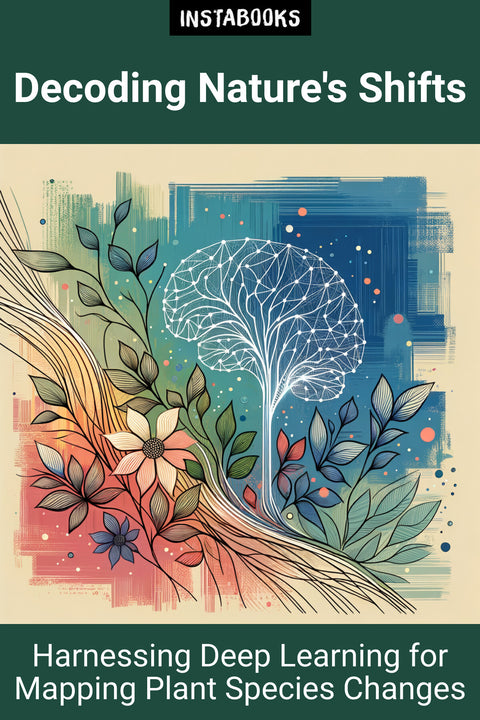
Decoding Nature's Shifts
Harnessing Deep Learning for Mapping Plant Species Changes
Included:
✓ 200+ Page AI-Generated Book
✓ ePub eBook File — read on Kindle & Apple Books
✓ PDF Print File (Easy Printing)
✓ Word DOCX File (Easy Editing)
✓ Hi-Res Print-Ready Book Cover (No Logo Watermark)
✓ Full Commercial Use Rights — keep 100% of royalties
✓ Publish under your own Author Name
✓ Sell on Amazon KDP, IngramSpark, Lulu, Blurb & Gumroad to millions of readers worldwide
Unveiling Nature's Hidden Patterns
In "Decoding Nature's Shifts," journey into the innovative world of deep learning models and their profound impact on our understanding of plant species distribution changes. This book offers a comprehensive exploration of how deep learning advancements are transforming biodiversity research, highlighting key roles played by citizen science and remote sensing data.
Advanced Techniques and Applications
Delve into advanced deep learning techniques like Convolutional Neural Networks (CNNs), Deep Boltzmann Machines (DBM), and Deep Denoising Autoencoders (DDA). Discover how these models achieve unprecedented accuracy in plant disease detection, multispecies distributions, and even medicinal plant classification. Learn how integrating these methods with large databases allows for precise plant identification, reflecting astonishing advancements in AI technology.
Citizen Science and Remote Sensing Integration
Explore the synergy between citizen science contributions and remote sensing data in enhancing model predictions. This section illustrates how data-driven insights from initiatives like Pl@ntNet and GBIF enable robust species distribution modeling, offering a fresh perspective on tackling climate-driven vegetation changes.
Overcoming Challenges and Seizing Opportunities
The book addresses both challenges and opportunities within this domain, such as data quality issues and model complexity versus the unparalleled potential for innovation. Engage with future directions, including predictive climate models and improved conservation strategies, emphasizing the vital role technology plays in preserving biodiversity.
Comprehensive and Practical Applications
Conclude with an in-depth look at real-world applications and theoretical insights. From detailed technical explanations to applications in monitoring environmental changes, this book serves as an essential resource for researchers, conservationists, and tech enthusiasts alike. Equip yourself with knowledge that's both intricate and immediately applicable to the evolving world of biodiversity and AI integration.
Table of Contents
1. Introduction to Deep Learning and Ecosystems- Understanding Deep Learning Models
- Impact on Biodiversity Studies
- Integrating AI with Ecology
2. Advanced Techniques in Plant Disease Detection
- Exploring Convolutional Neural Networks
- Deep Boltzmann Machines Explained
- Denoising Autoencoders in Practice
3. Multispecies Deep Learning Applications
- Modeling Species Distributions
- Utilizing Citizen Science Data
- Overcoming Traditional Method Limitations
4. Remote Sensing in Vegetation Analysis
- Understanding Climate-Driven Changes
- Future Greening Predictions
- Satellite Data Transformations
5. Medicinal Plant Classification with CNNs
- Leveraging Annotated Image Databases
- Applications in Healthcare
- Accuracy and Classification Challenges
6. Challenges in Model Integration
- Addressing Data Quality Issues
- Simplifying Model Complexity
- Data Collection Innovations
7. Opportunities in Biodiversity Research
- Predictive Climate Modeling
- Innovative Conservation Strategies
- AI's Role in Ecological Preservation
8. Detailed Explanations of Deep Learning Models
- Architectures and Training Methods
- Evaluation Metrics for Biodiversity
- Case Studies in Real Applications
9. Citizen Science Impact
- Initiatives Enhancing Research
- Data Contribution from Volunteers
- Leveraging Public Engagement
10. Integrating Remote Sensing and Deep Learning
- Techniques for Enhanced Analysis
- Challenges and Solutions
- Future Prospects and Integration
11. Applications of Hybrid Deep Learning Methods
- Plant Species Identification Techniques
- Best Practices and Implementation
- Future Directions in Hybrid AI
12. Conclusions and Future Directions
- Summarizing Key Insights
- Future Trends and Innovations
- Continuing the Research Journey
Target Audience
This book targets researchers, conservationists, and AI enthusiasts interested in the intersection of technology and ecology.
Key Takeaways
- Understand advanced deep learning techniques for plant disease detection.
- Explore the integration of remote sensing data with AI.
- Learn about applications in mapping species distributions.
- Address challenges in data quality and model complexity.
- Discover future directions for conservation strategies.
